Ancient Mesopotamia, often referred to as the cradle of civilization, was once home to some of the most influential cities in human history.
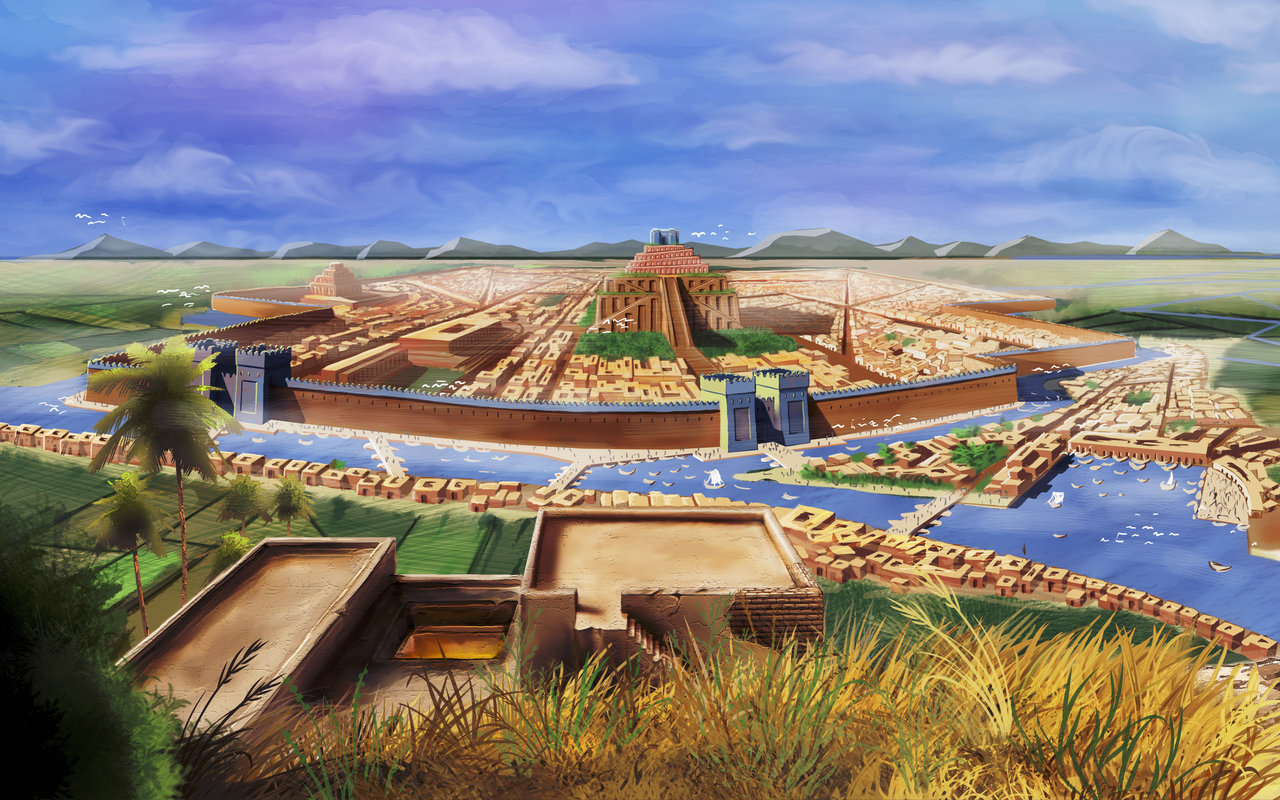
Mesopotamia (from the Greek, meaning ‘between two rivers’) was an ancient region located in the eastern Mediterranean bounded in the northeast by the Zagros Mountains and in the southeast by the Arabian Plateau, corresponding to today’s Iraq, mostly, but also parts of modern-day Iran, Syria and Turkey. The ‘two rivers’ of the name referred to the Tigris and the Euphrates rivers and the land was known as ‘Al-Jazirah‘ (the island) by the Arabs referencing what Egyptologist J.H. Breasted would later call the Fertile Crescent, where Mesopotamian civilization began.
Behind the social order and religion of the people who left us our earliest written records (around 3300 BCE in Sumer in southern Mesopotamia) lay many thousands of years of prehistoric religion that can be known at least dimly from such evidence as burial sites, bones, tools, and statuary. All over the ancient world, corpses were dusted with red ochre, evidently as a symbol of blood and therefore of life and possibly of life after death. Many burial sites were oriented toward the East and the rising sun, which may also indicate a hope for some sort of rebirth or afterlife in another world, as may also the presence in graves of tools and ornaments.
Mesopotamian religion was polytheistic, with followers worshipping several main gods and thousands of minor gods. The three main gods were Ea (Sumerian: Enki), the god of wisdom and magic, Anu (Sumerian: An), the sky god, and Enlil (Ellil), the god of earth, storms and agriculture and the controller of fates. Ea is the creator and protector of humanity in both the Epic of Gilgamesh and the story of the Great Flood. In the latter story, Ea made humans out of clay, but the God Enlil sought to destroy humanity by creating a flood. Ea had the humans build an ark and mankind was spared. If this story sounds familiar, it should; foundational Mesopotamian religious stories about the Garden of Eden, the Great Flood, and the Creation of the Tower of Babel found their way into the Bible, and the Mesopotamian religion influenced both Christianity and Islam.
Mesopotamia is a Greek word for ‘Land between two rivers.’ It’s the region of Western Asia located between the Tigris and Euphrates Rivers. Additionally, it’s home to the area known as the fertile crescent, where the first evidence of agriculture was found. Here the first human civilizations were taking the earliest steps from hunter-gatherer societies into settled community.
In this region, some of the most important inventions occurred that would shape mankind. The wheel, written language, the idea of minutes, hours and seconds, and many other aspects of modern daily life began from the ancient Mesopotamian civilizations.
There were many different rulers throughout the region as well as cultural shifts within the ancient Mesopotamian civilizations. Researchers have had difficulties in working out a concise history. Various cultures thrived in the few thousand years that Mesopotamia existed.
The Origin of the First Civilization
In the time before ancient Mesopotamia is found in the record, were the first signs and evidence of modern civilization. It occurs in steps.
Around 10 000 BC, the first evidence of the first civilization include:
- A transition to settled living
- Farming of grains and legumes
- Evidence of houses
- Burial of the dead in ceremonies
After this period the rise to modern society begins.
Ancient Mesopotamian civilizations would leave influential footprints with language and cultural beliefs. It may be down to its central location for the spread of modern society.
Sitting between ancient Egypt and the Indus Valley, Mesopotamia became a melting pot of trade, technology, writing, and religion for many of the early civilizations in pre-history.
1) The Sumerians, the Oldest Civilization

Ancient Sumer was the first of the ancient Mesopotamian civilizations to develop. It is thought that somewhere around 5000BC was about the time of origin. The exact dating of its beginning has proven to be quite difficult. Smaller settlements appear in the region much earlier than this time. These eventually expanded into city-states that soon became the cornerstone of Sumeria.
Evidence points to roughly a dozen smaller city-states by the fourth millennium B.C. These usually consisted of a walled metropolis dominated by a ziggurat. An iconic, tiered, pyramid-like temple associated with the Sumerian religion.
Major Sumerian city-states included Eridu, Ur, Nippur, Lagash, and Kish. The oldest civilization and most sprawling was Uruk, a thriving trading hub that boasted six miles of defensive walls and a population of between 40,000 and 80,000. At its peak, around 2800 B.C., it was most likely the largest city in the world.

The city’s houses were made of bundled marsh reeds or mud bricks. They had complex irrigation canals that were dug to harness the silt-laden waters of the Tigris and Euphrates for farming.
It was here that the first written languages appear, around 3000BC, in the form of Cuneiform writing. The Sumerian writing system would revolutionize the way humans communicate and has influenced the world dramatically.
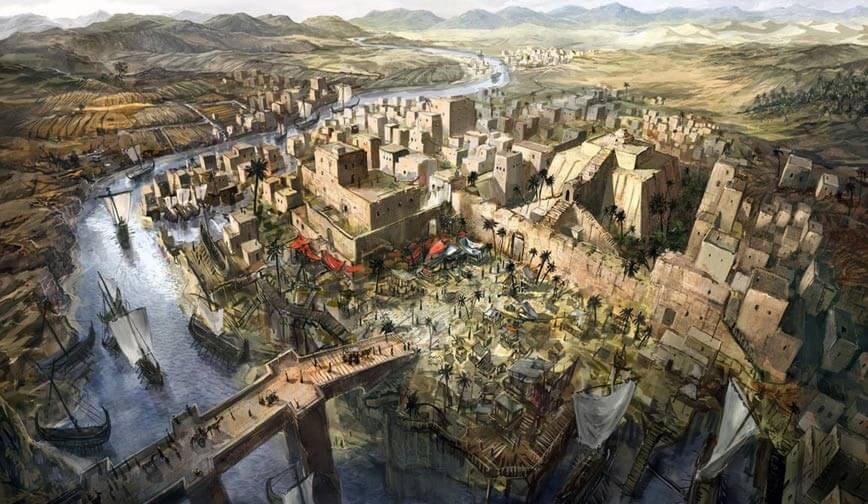
The Sumerians were primarily a trading culture, building ships and other transport vessels to enable the exchange of things like ivory, copper, leather and precious stones. It was this aspect of their culture that may have been the inspiration for developing a written language.
The Sumerian King List is a clay tablet that documents the names of most of the ancient rulers of Sumer as well as the lengths of their reigns. It’s a blend of confirmed history mixed with the more mysterious. One early king is said to have lived for 43,200 years. It also includes Sumer’s lone female monarch in the form of Kubaba, a “woman tavern-keeper.” She supposedly took the throne in the city-state of Kish sometime around 2500 B.C.
The origins of the sixty-second minute and sixty-minute hour can be traced all the way back to ancient Mesopotamia. Like modern mathematics is a decimal system based on the number ten, the Sumerians mainly used a structure that was based around groupings of 60.
2) The Akkadian Civilization
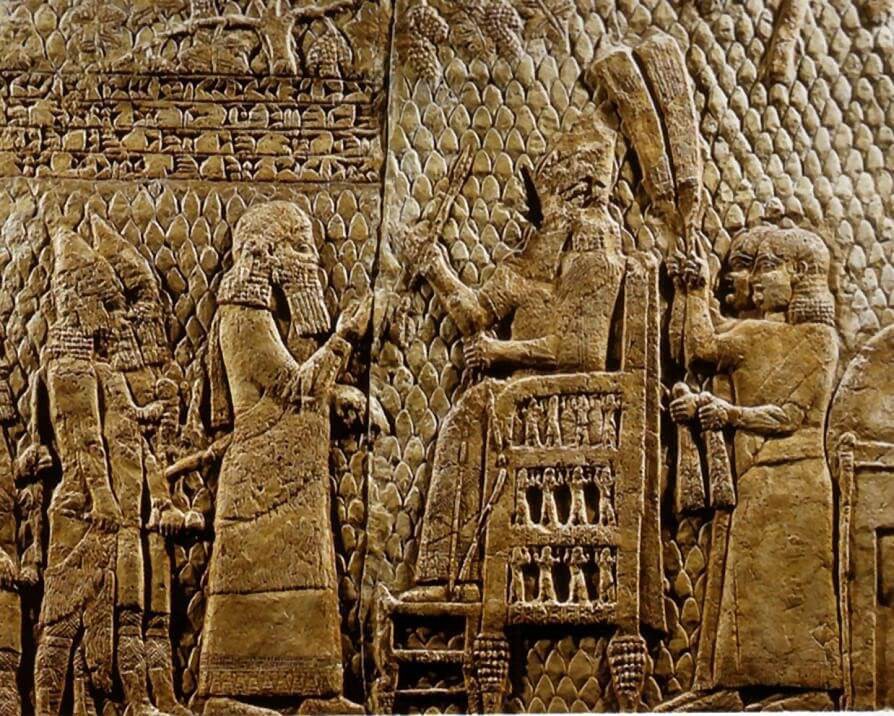
Located in the area to the north of Sumer, Akkadia became established and a dominant force in Mesopotamia around 3000BC.
The Akkadian empire is thought to be the first dynastic rulership to have existed. It took over control of Sumer and the Levant at around 2300BC. The inhabitants spoke Semitic languages, which are closely related to Arabic and Hebrew.
The Akkadians created the first united empire in Ancient Mesopotamia. It was a hereditary monarchy, meaning that the country was ruled by a King who was succeeded by his sons upon his death.
The first ruler of the Akkadian empire was known as Sargon. His sons, Rimush, Manishtushi, Naram-Sin, grandson Naram-Sin, and great-grandson Shar-Kali-Sharri were the list of rulers.
Sargon was seen as a semi-divine being after his death.
During his rule, he was fixated on conquering the known world. The Akkadian empire ruled over all the ancient Mesopotamian civilizations.
The Akkadian king was credited with many administrative firsts. These include the year name system and a unified system of weights and measures. However, he had difficulty controlling their empire and faced frequent uprisings, especially among the Sumerian city-states.
The Akkadians spanned into parts of Syria, Iran, Jordan, Turkey, Kuwait and possibly even further to the south and into Cyprus. The empire would eventually collapse sometime after 2150bc, just a few hundred years after it was founded.
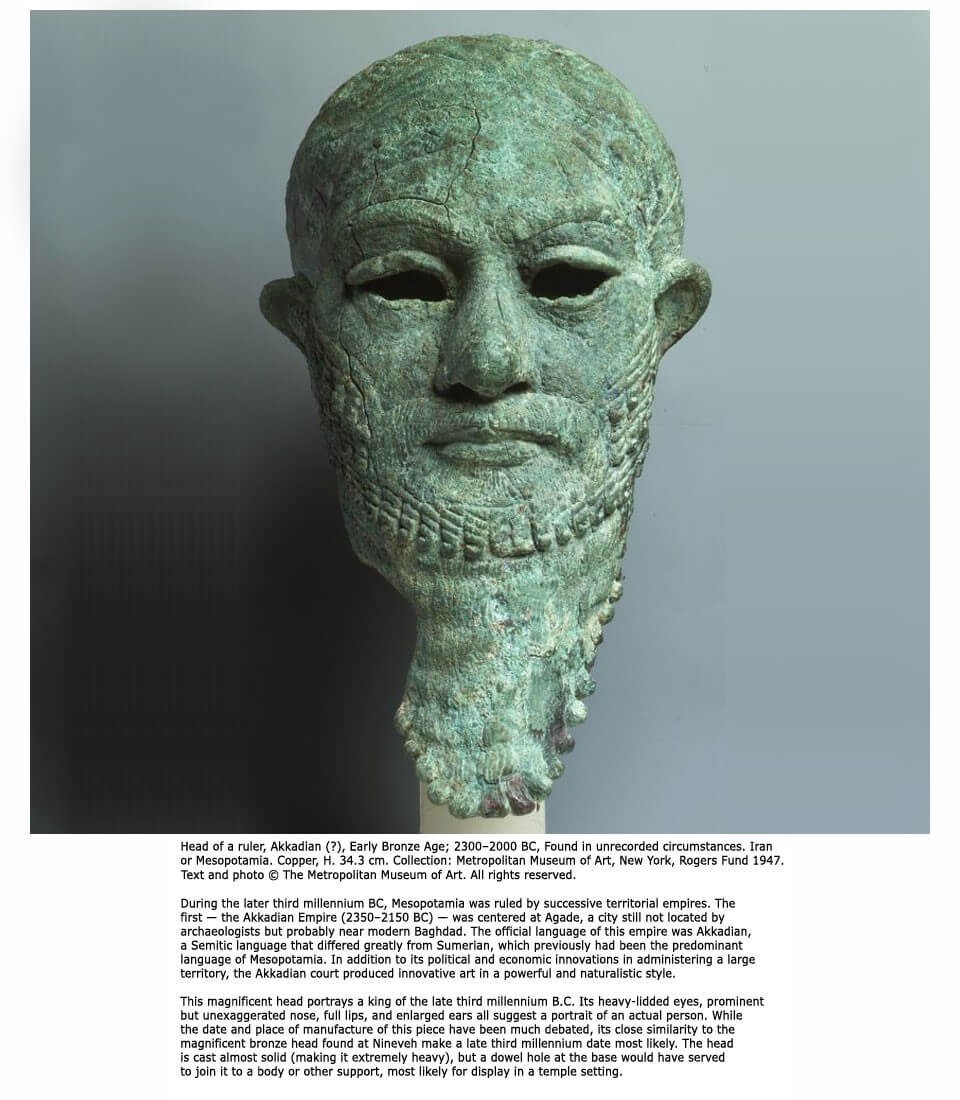
Akkadian civilization used the cuneiform script, which was adapted to their own language. Evidence has been found that the Akkadians also used Sumerian writing, but the Akkadian writing was also used under Sargon’s laws. It was mainly used among citizens who had been offered administrative posts by Sargon.
The ruins of cities like Akkad and Sippar lie buried in unknown locations. While there are remains of works and palaces, restored by the Akkadians, no architectural sites have been found to know exactly what the buildings of the period looked like.
3) The Assyrians
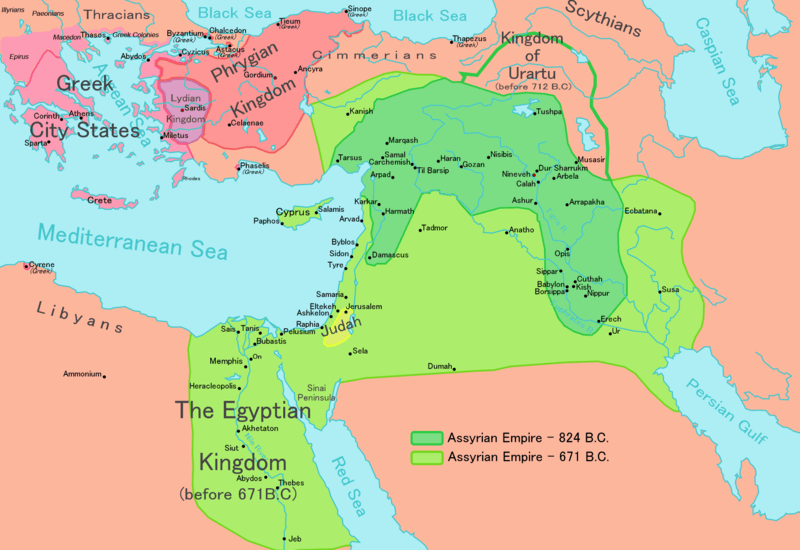
After the Akkadian empire collapsed, the Assyrians were the powerhouse of Mesopotamia. For over 1400 years, Assyria had control of parts of Egypt, Turkey, and modern day Iraq. It is thought the civilization became wealthy enough to develop armies and warriors through trading goods with Anatolia (located in modern-day Turkey).
Over time, there were many rises and falls of the Assyrian Civilization. The Babylonians had control of southern Mesopotamia, and the Assyrians had the north. One of their strongest leaders during this time was King Shamshi-Adad.
Under Shamshi-Adad the empire expanded to control much of the north, and the Assyrians grew wealthy. However, after Shamshi-Adad’s death in 1781 BC, the Assyrians grew weak and soon fell under the control of the Babylonian Empire.
The Assyrians once again rose to power from 1360 BC to 1074 BC. This time they conquered all of Mesopotamia and expanded the empire to include much of the Middle East including Egypt, Babylonia, Israel, and Cypress. They reached their peak under the rule of King Tiglath-Pileser I.
The final, and perhaps strongest, of the Assyrian Empires ruled from 744 BC to 612 BC. During this time Assyria had a string of powerful and capable rulers such as Tiglath-Pileser III, Sargon II, Sennacherib, and Ashurbanipal. These leaders built the empire into one of the most powerful empires in the world. They conquered much of the Middle East and Egypt. Once again, it was the Babylonians who brought down the Assyrian Empire in 612 BC.
Of all the cultures of the ancient Mesopotamian civilizations, Assyria is considered to be the greatest. It developed advanced military and bureaucratic systems, which enabled it to expand and control much of the ancient world.
4) Babylonians
The Babylonian Empire was the most powerful state in the ancient world after the fall of the Assyrian empire (612 BCE).
The name is thought to derive from bav-il or bav-ilimwhich, in the Akkadian language of the time, meant ‘Gate of God’ or `Gate of the Gods’ and `Babylon’ coming from Greek.
Babylon was founded at some point before the reign of Sargon of Akkad.
At that time, Babylon seems to have been a minor city or perhaps a large port town on the Euphrates River at the point where it runs closest to the river Tigris.
Whatever early role the city played in the ancient world is lost to modern-day scholars because the water level in the region has risen steadily over the centuries and the ruins of Old Babylon were lost.
The known history of Babylon, then, begins with its most famous king: Hammurabi (1792–1750 BCE).

Possibly the most famous of all the ancient Mesopotamian civilizations. Babylon was originally home to one of the Seven Wonders of the World, The Hanging Gardens of Babylon. It was also the place in which the Biblical ‘Tower of Babel’ was thought to have built and ultimately destroyed. There are many references to Babylon throughout The Bible, which has made it a hotspot for archaeologists around the world.
Around 60 miles south of Baghdad is where the ancient city once stood. It was built sometime around 2300bc and underwent periods of rulership from various cultures. Once a minor city-state, Babylon was most probably a port town with trade the most important economic aspects of the culture.
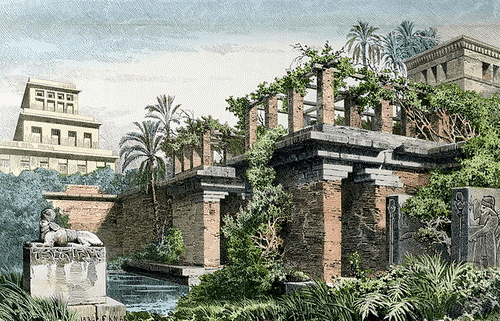
Babylon was first built where the Euphrates and Tigris Rivers run closest to each other. Much of it’s earliest structures have now been lost to rising water levels which have steadily been increasing over the last few hundred years.
The structures of Babylon that still remain above the water date to well over a thousand years after it was first founded. Unfortunately, the oldest parts of the ancient Mesopotamian civilization may well be lost to history.
Conclusion
The ancient Mesopotamian Civilizations were some of the first to show modern societal, government and agricultural practices. Some of the most important inventions occurred in Mesopotamia that would shape mankind . The wheel, written language, the idea of minutes, hours and seconds, and many other aspects of modern daily life began from the ancient Mesopotamian civilizations.
Resources
- https://www.ncbi.nlm.nih.gov/pubmed/17757228
- https://study.com/academy/lesson/akkadian-civilization-culture-art-religion.html
- https://medium.com/@humanoriginproject/the-4-major-ancient-mesopotamian-civilizations-a3ba9c433b97
- https://courses.lumenlearning.com/suny-hccc-worldhistory/chapter/the-assyrians/
- https://www.history.com/topics/ancient-middle-east/babylonia



